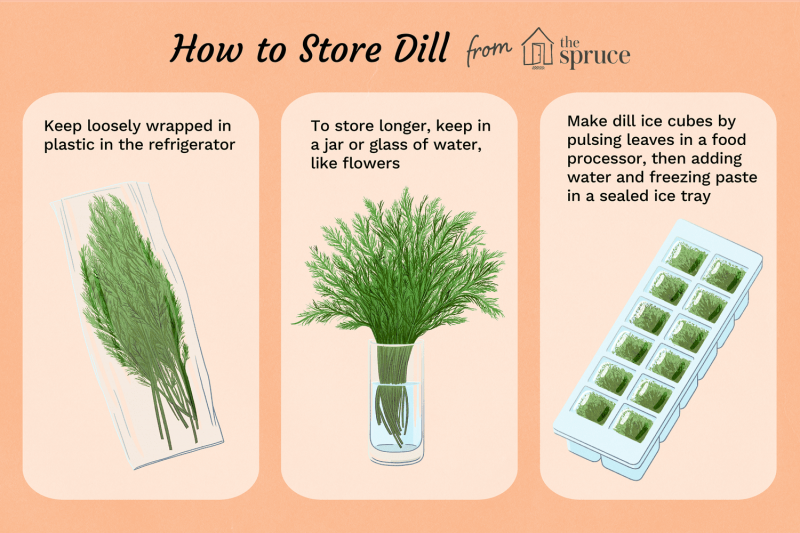A Guide to Buying, Cooking, and Storing Dill
Dill immediately brings to mind dill pickles and potato salad today, but it has had a place for centuries in cuisines throughout Europe and Asia. Dill leaves are known as the dill weed herb, while dill seed is used as a spice. Fresh dill is in season in spring and early summer, but it is often grown in greenhouses so it is available year-round.
What Is Dill?
The dill plant (Anethum graveolens) provides feathery green leaves for the dill weed herb, while the flat, oval fruits make the dill seed spice. It’s an annual herb related to celery that tends to replant itself and spread widely, which is good to know if you’re considering planting it in your garden. Dill seeds are used in seasoning, such as in pickles. Like chervil, dill weed is delicate and works particularly well with eggs or in salads.
Fresh vs. Dried
You will find dried dill weed sold in the spice section of the supermarket, but the flavor is a pale substitute for fresh dill weed. If that is all you can source, use more of the dried herb to get dill flavor in your recipe. Dill seed will also be sold in dried form and that is acceptable for all uses for the seeds.
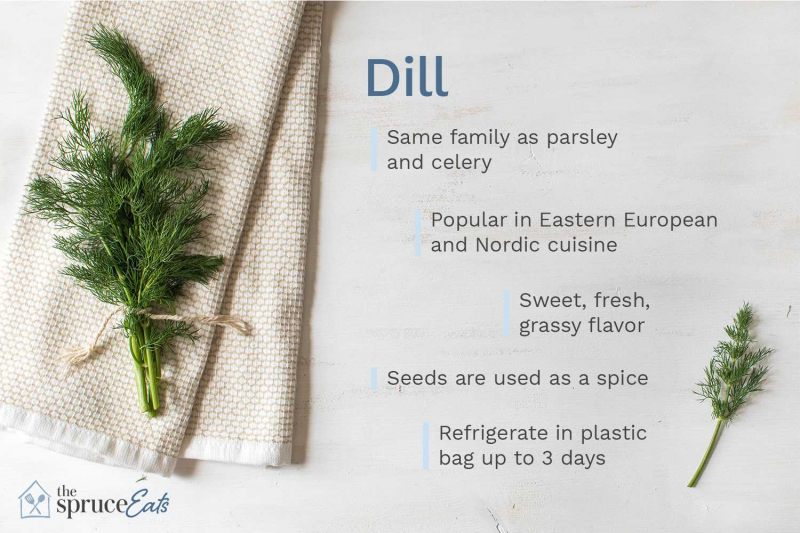
What Does It Taste Like?
Dill tastes grassy with a bit of anise-like licorice flavor. Be aware that once the weather turns hot, dill plants flower or "bolt." This bolting changes the flavor of the leaves, making them less aromatic and more bitter. Dill seed tastes like a mild version of caraway.
Cooking With Dill
Because it has such a unique taste, a small amount of dill can go a long way, which is why dill is so good to use as a garnish. The feathery texture of dill leaves looks beautiful and a small sprig of dill can add a noticeable aroma to a dish. Dill is also good in salads and is the key ingredient, along with buttermilk, in giving homemade ranch dressing its unique flavor.
When used in cooking, dill weed will lose flavor the longer it is cooked, so it should be added at the last minute only. The opposite is true for dill seed, which develops more aroma and flavor when heated. Recipes often call dill seed to be toasted in a hot frying pan before being added. As well, dill seeds are often used in pickling.
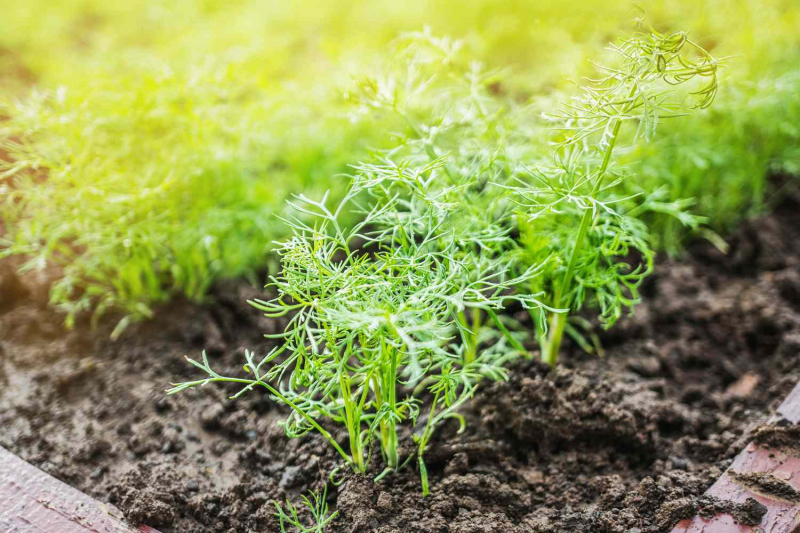

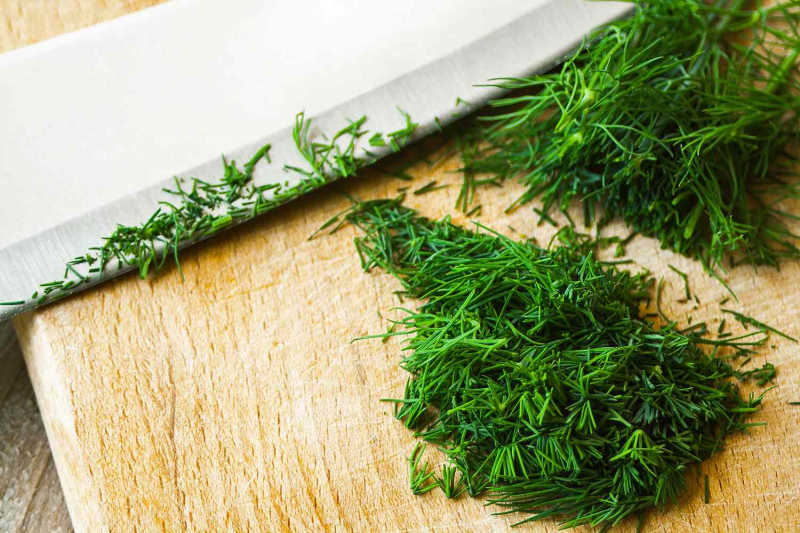
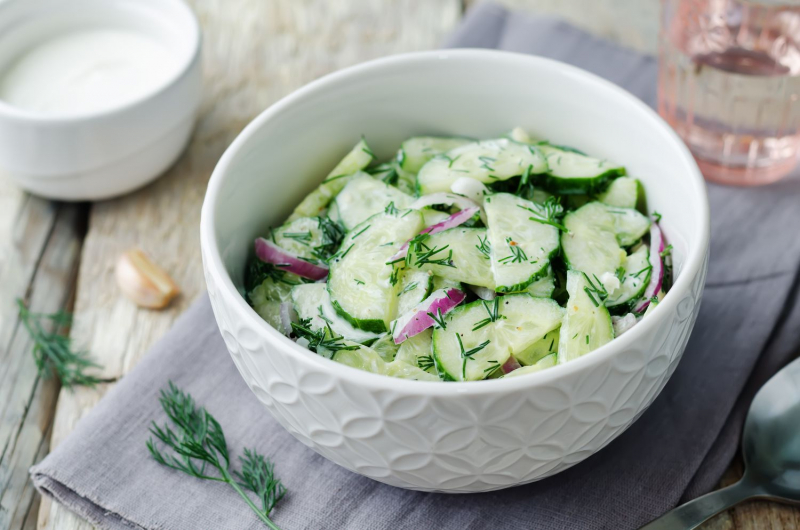
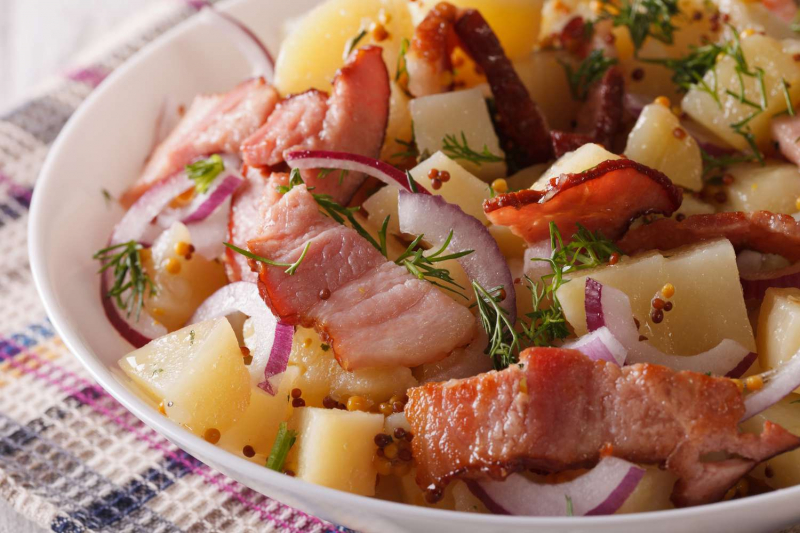
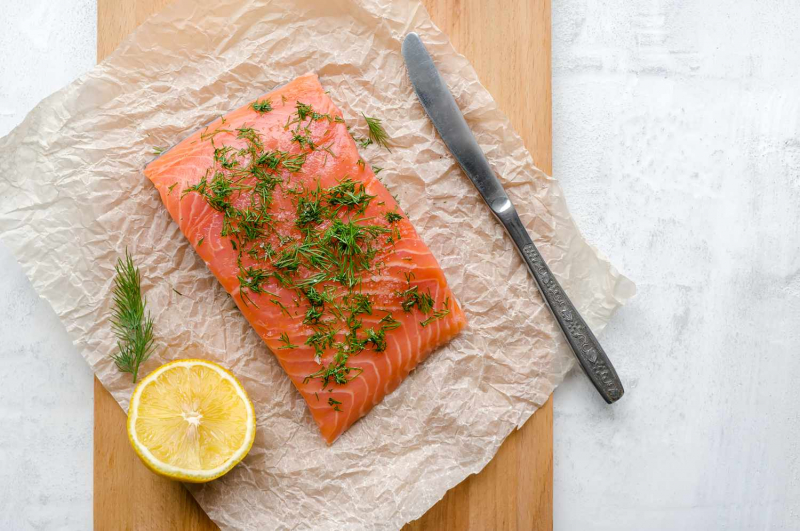
Recipes With Dill
As a garnish, dill is excellent on cold soups featuring beets, cucumbers, or yogurt, or on tzatziki, the traditional Greek cucumber yogurt salad. Dill weed pairs particularly well with all types of seafood. It is also good with spreads, sour cream, cream cheese, and lamb.
- Beet Cabbage Borscht
- Mahi Mahi in Lemon Dill Sauce
- Lemon Dill Pesto
Substitutions
If you have to substitute dill weed and dill seed, 1 tablespoon chopped fresh dill is the equivalent of 1 teaspoon dried dill weed. Some recipes will call for weight rather than volume, or vice versa, and it’s helpful to know that 1/2 ounce fresh dill yields about 1/2 cup leaves.
Where to Buy Dill
Dried dill weed and dill seed can be found in the spice section of the grocery store. Look for bunches of fresh dill in the produce or fresh herb section. Look for fresh dill with fresh-cut stems and unwilted leaves. Dill fronds are airy and delicate, and as such, they wilt and get bruised easily. Be sure to handle dill with care as you shop and take it home.
Storage
Once home, store stems of fresh dill weed loosely wrapped in plastic in the refrigerator and use within a day or two—dill tends to wilt and get mushy rather quickly after it's been picked.
To store it a bit longer, place a bunch of dill in a jar or glass of water (like flowers), then cover the top with plastic and put the whole thing in the fridge.
Dill doesn't keep much of its flavor if you dry it, but it freezes well. A good way to freeze it is to put the leaves in a blender or food processor. Pulse to finely chop the leaves and then add just enough water to just turn the chopped leaves into a paste. Spoon the paste into an ice cube tray, freeze, transfer the resulting cubes to a sealable plastic bag, and store in the freezer. Then add a dill ice cube anytime you want a burst of fresh dill flavor to soups or stews.
